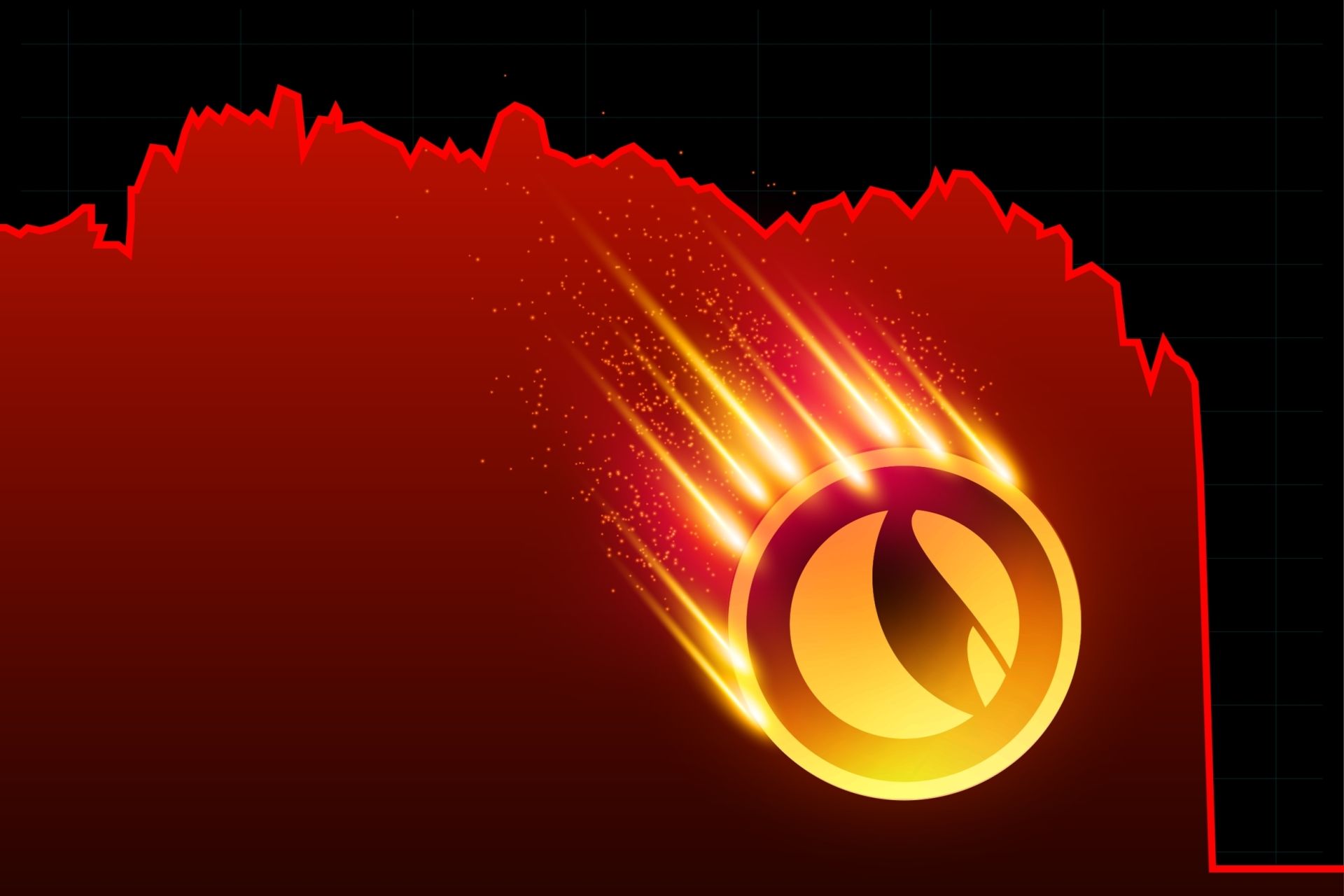CoinEd
The collapse of a cryptocurrency

The cryptocurrency market has seen a tumultuous past few months. Since November last year, Bitcoin has more than halved in US $ value, and other cryptocurrencies have seen far bigger declines. While the crypto market may be reeling, it is not that far disconnected from other markets. Russia's invasion of Ukraine has devastated global trade and left many nations on the verge of economic recession. Fuel prices are skyrocketing and stock markets are pointing downward. Netflix, arguably one of the biggest beneficiaries of Covid-19 and free paychecks from the US government, has seen its share price drop even more than Bitcoin has.
The cryptocurrency market is simply doing what markets do - there are ups, and then there are downs. When the bad times come, there will always be casualties. LUNA is such an example.
What is LUNA?
Terra is a blockchain network that many expected to become a serious contender to others in its class, like Ethereum. The growth of its cryptocurrency, LUNA, from less than $0.5 in 2020 to $100 just a year later saw many investors making life-changing money. LUNA became one of the top 10 cryptocurrencies and grew a massive community of investors and companies.
But, on 7 May 2022, the network began to collapse. Within 1 week, the price of LUNA had dropped to virtually $0, and million-dollar investments effectively became worth nothing. This further weakened an already decreasing crypto market, with Bitcoin dropping about 25% at the same time.
But, on 7 May 2022, the network began to collapse. Within 1 week, the price of LUNA had dropped to virtually $0, and million-dollar investments effectively became worth nothing. This further weakened an already decreasing crypto market, with Bitcoin dropping about 25% at the same time.
How did LUNA collapse?
The Terra blockchain is designed in such a way that digital tokens can be created on it. One such token, UST, was created to act as a cryptocurrency always equal to $1. UST is called a stablecoin, and many other blockchains like Ethereum and BNB have their own stablecoins.
While most stablecoins require the issuer to actually have dollars in a bank account to back each token up, UST was designed to maintain its $1 value through an algorithm. This algorithm created or destroyed LUNA and UST based on supply and demand, and always tried to achieve a balance so that 1 UST = $1. The problem with algorithms is they can be manipulated.
In May, this was believed to have happened, causing UST to lose its peg. The effect was the creation of trillions of LUNA tokens, effectively causing a gigantic over-supply and completely destroying the value of the cryptocurrency.
While most stablecoins require the issuer to actually have dollars in a bank account to back each token up, UST was designed to maintain its $1 value through an algorithm. This algorithm created or destroyed LUNA and UST based on supply and demand, and always tried to achieve a balance so that 1 UST = $1. The problem with algorithms is they can be manipulated.
In May, this was believed to have happened, causing UST to lose its peg. The effect was the creation of trillions of LUNA tokens, effectively causing a gigantic over-supply and completely destroying the value of the cryptocurrency.
What are the lessons?
Terra was an incredibly well-marketed project during the last cryptocurrency “hype” cycle that blindsided many investors with inflated price predictions. In many respects though, it was a good implementation of blockchain technology. What caused the failure of Terra was overconfidence and inaction by its creators to prevent manipulation of a known flaw. As an investor, one should always look beyond the hype, remove emotion, educate oneself and only risk what you are able to lose.
Conclusion
This event has left a stain on the development of cryptocurrencies and has sadly destroyed thousands of lives. But, it’s important to understand that cryptocurrency technology has been here before and continues to develop at a staggering rate. One bad egg doesn’t ruin the basket. Some people may once again analyze this as the death of cryptocurrencies, but with numerous countries now considering declaring Bitcoin as legal tender and many of the top 500 companies investing in NFTs, this seems highly unlikely.
__________________________________________________________________
At CoinEd, we believe that learning about cryptocurrencies and blockchains is essential for everyone, regardless of age or background. Since 2017, we've been dedicated to providing accurate and unbiased education that is simple, engaging and enjoyable.
Our mission is to help you navigate this digital world with confidence. We’re always thinking outside the block, and so can you! Visit coinedschool.com for more information on how we can help you understand this fast-developing technology.
Disclaimer: CoinEd does not endorse or promote any 3rd-party products, services or content that it does not believe has value to its audience. The information and views expressed on the CoinEd blog are for educational and entertainment purposes. CoinEd endeavours to provide accurate and truthful content with the information at hand at time of publication. CoinEd is not a licensed financial adviser and encourages its audience to do their own research and consult a trusted financial specialist before investing money. CoinEd’s aim is to expand our audiences’ understanding of cryptocurrencies & blockchain technology. E&OE.
At CoinEd, we believe that learning about cryptocurrencies and blockchains is essential for everyone, regardless of age or background. Since 2017, we've been dedicated to providing accurate and unbiased education that is simple, engaging and enjoyable.
Our mission is to help you navigate this digital world with confidence. We’re always thinking outside the block, and so can you! Visit coinedschool.com for more information on how we can help you understand this fast-developing technology.
Disclaimer: CoinEd does not endorse or promote any 3rd-party products, services or content that it does not believe has value to its audience. The information and views expressed on the CoinEd blog are for educational and entertainment purposes. CoinEd endeavours to provide accurate and truthful content with the information at hand at time of publication. CoinEd is not a licensed financial adviser and encourages its audience to do their own research and consult a trusted financial specialist before investing money. CoinEd’s aim is to expand our audiences’ understanding of cryptocurrencies & blockchain technology. E&OE.

Copyright © 2025
Company
Work With Us
You can't learn anything from a popup
But you can learn a ton of stuff from the CoinEd team. Sign up to CoinEdition and get access to our beginners guide, private workshops, and educational & entertaining email updates.
Thank you!
Access your guide from the Free Resources menu option at the bottom of the page.
Access your guide from the Free Resources menu option at the bottom of the page.
Write your awesome label here.
Ever wondered how money evolved to where it is today?
Or why we left the gold standard?
Watch the first lesson of the course to find out!
Watch the first lesson of the course to find out!
Write your awesome label here.
Bitcoin address
bc1q77tkpj2rj0sdx4zsjgjncstt50xlcz8stlreaj

